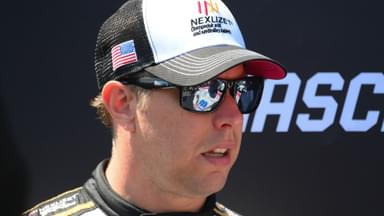The drivers have been demanding more tire wear for quite some time now, and finally; they got it at Bristol Motor Speedway. However, for RFK Racing owner, Brad Keselowski, it was a jump from a 2 on a 10 scale to a 9 or a 10. Perhaps, a middle ground would have been better. But still, he felt quite good about the 500-mile race, and here’s why.
Advertisement
“It was different; I just don’t know why,” he said in a post-race interview. “Whether there was some difference in the compound or the resin, I don’t know. The driver’s been asking for the tires to wear out more; we got it…It was definitely a different race. I had a lot of fun. It’s good to have something different once in a while.”
Indeed, it was different. Tire troubles haunted almost everyone all afternoon. Moreover, only five cars could finish on the lead lap, something that has never happened in the NASCAR Cup Series in the last two decades. The tire issues also resulted in the highest number of lead changes (54) in the history of NASCAR’s short tracks, which also broke the previous record of 40 set at the half-mile racetrack way back in 1991.
NASCAR and Goodyear were as clueless as the RFK driver
While several drivers had seen signs of tire wear during the practice and qualifying session on Saturday, nobody expected them to wear out so dramatically. Even NASCAR was unsure of the reason behind this unusual turn of events. And especially since they used resin as the compound to enhance traction between the rubber and the track, something like this shouldn’t have happened.
NASCAR switched from PJ1 to resin earlier this year. The governing body found out that PJ1 became slick like oil on wet tracks and, hence, resin came to be used. Moreover, there has never been such an issue, even with resin, at any NASCAR track.
“There’s nothing that stands out why the resin vs. PJ(1) did what they did,” stated John Probst, NASCAR senior vice president and chief racing development officer.” Still, he assured that NASCAR would certainly look into the matter and work along with Goodyear to determine where things went all topsy-turvy.





